| ASSIGNMENT 1. A PERSONAL NARRATIVE. | CHOOSE MONOSCENIC, CONTINUOUS OR SEQUENTIAL NARRATIVE TO ILLUSTRATE EITHER A. AN OFTEN TOLD FAMILY STORY. B. AN EVENT THAT INVOLVED OR AFFECTED YOUR COMMUNITY C. OR AN EVENT THAT SPEAKS OF YOUR CULTURAL BACKGROUND. |
Research question: How can I depict a powerful dream that stayed with me for 18 years to retain the drama and darkness/horror of the narrative, while at the same time keeping some aesthetic beauty in the work?
I grew up in a farming community that was pretty isolated and no specific event comes to mind, apart from of course the annual Young Farmers and Flower shows.The only oft told family story I could think of was my great grandmother from a wealthy mill owner family who ran away with a local farmer and was disowned by her family and treated cruelly by her mother-in-law (the gruesome tale what that she was proud of her white hands and the mother-in-law grabbed them and plunged them in the scalding washing tub) before she died at a young age (my great grandmother died at a young age, not my great, great grandmother from whom of course I am also directly descended and of whom the story tells nothing more). However only two weeks ago my Mum told me that my niece’s research at the registry office proved this story false – my great grandmother was actually Polly from the pub. Whether her hands were white or not is anyone’s guess.
I decided, therefore to focus on b) an event that affected my community, and indeed the whole world.
I am sure others have decided in the last year, to focus on their personal response to the recent events surrounding covid19. I know, though, from seeing those around me, and talking to them, that my experience is significantly different to the experience of the majority of my peers.
On March 23rd 2020, when I looked at the governments High Consequence Infectious Diseases (HCID) web site I saw that covid19 had been downgraded on 19 March 2020 from a HCID to a low consequence infectious disease by the Governments Health Advisory committee. (It had been put on the HCID list in January 2020). This was because in the words of our UK Government health committee ‘it has low overall mortality rates.’ (https://www.gov.uk/guidance/high-consequence-infectious-diseases-hcid)
From then on for the last 19 months I have researched peer reviewed papers, the Office of National Statistics (ONS), virology, deaths registered in local councils, etc. I was, and remain, convinced that locking down the whole world was a grave error and disproportionate to the threat of the virus. I was not convinced, from the death rate (0.19% of the UK population, 0.15% of the world population and 0.05 of the under 70s population), that ‘lockdown’ was a reasonable response. I thought, and still think, that it is not our job to protect the NHS, but the other way round (and the fact that UK hospital beds have been reduced by 25% despite a huge growth in the population was never mentioned when talk about ‘protecting the NHS’ was rife). I thought that the billions that the UK government would need to borrow to sustain the economy during ‘lockdown’ could be better spent on building new hospitals, training new medical staff and caring for vulnerable people in quarantine, rather than on furlough and various other schemes, including the £12 million to December 2021 spent on the vaccination itself. I was concerned about economic collapse (particularly in the global south), loss of jobs, loss of education (particularly in the global south), loss of health and dental treatments (other than for covid), and loss of human rights and freedoms .
I felt convinced, and still am, that the covid virus experience has taken us further from democracy toward authoritarian police states worldwide. In the UK four new acts have been taken through parliament during lockdown including restrictions on protests, and access to judicial review, as well as the coronavirus act itself (still in force on 21.10.21), which for example, means that autopsies are not currently being conducted apart from for accidental deaths and that one doctor rather than two can now sign a death certificate (this is important – particularly since the vast majority of deaths ‘with’ covid have two or more co-morbities on the death certificate, and we therefore do not know the exact role of coronavirus in the death). Crucially the PCR test used to identify coronavirus19 has is being removed from use in the USA from 31 Dec 2021. The Centre for Disease Control web site clarifies this is to allow tests to be developed that better differentiate between SARS2 and influenza – meaning that we should question how many people actually have/had the coronavirus and how many actually had flu. I should perhaps remind readers that the WHO stated in 2020 that influenza has been reduced around the world by 98%! ). (https://www.cdc.gov/csels/dls/locs/2021/07-21-2021-lab-alert-Changes_CDC_RT-PCR_SARS-CoV-2_Testing_1.html). Very worryingly, discussion is underway to replace the Human Rights Act with a Bill of Rights which will seriously challenge many freedoms, including bodily autonomy.
The more research I did the more convinced I became that the SARS2 virus was being used as an excuse by the Pharmaceutical industry to make money out of vaccines, and further manipulate the public into its already strong dependence on drugs; as well as to implement an agenda that had nothing to do with protecting the health of world citizens (hardly a concern before) and everything to do with setting up new systems of control and surveillance of world populations.
(My PhD was focused on a Foucauldian Archaeological analysis of how our perceptions of prominent social issues change within a constellation of social circumstances that make our new perceptions, and subsequent behaviour, possible. For example, Foucault (1969) was interested in how our perceptions of mental health changed following the shutting down of the leprosy asylums in France, that were not very long afterwards reopened as mental hospitals – ie. the hospitals were opened in response to the problems of what to do with the buildings – creating a whole mental health profession in the process, and a total switch in the way mental health is seen. People with mental health ‘problems’ had been seen before this as seers or people who were demonic or had upset God. It strikes me that the ‘lockdown’ we have seen throughout the whole world in response to a virus that is mild for most of us, would not have been possible without certain conditions that allowed it – particularly the internet, but also the misunderstanding of science as producing the ‘real truth’ and our lionising of the ‘expert’ – and that without these conditions our perceptions of the virus and how to respond to it would be very different. Once the conditions allow a certain response not only is a change in perception brought about, but this change conditions our beliefs about, in the virus case, our responsibility for our health, our relationship to authority, our expectations about illness and so on. My PhD lead to an interest in questioning mainstream discourses, that SEEM to arise from material circumstances, but on analysis we find it is the other way around – the material circumstances arise from the discourse/ideology. )
My experience through this past 19 months, has been one of disbelief at the way the general public have accepted that their government’s chief concern is our safety.
I have been shocked at the way the media set out to frighten people about a virus that it was clear from the beginning largely affected people with other severe illnesses, particularly diabetes and heart diseases and those who are over 75 (the average age of death has been 81 in the UK and for example in the 50-59 age group one has a 1 in 1399 chance of dying from covid, in the 20-30 age group it is 1 in 43,478 chance, in the under 19 age group it is approx 1 in 500,000. (Office of National Statistics figures). (See also Laura Dodsworth, ‘A State of Fear: how the UK government weaponised fear during the covid pandemic. 2021. Pinter and Martin Ltd).
Along with disbelief, came frustration that so few people initially seemed prepared to question the mainstream dominant narrative – the story that covid19 was a killer disease (and the later belief that everyone, including children, should be vaccinated. Indeed as I write – October 21 2021 – I just heard on the radio a public health plea for children under 2 to be given the vaccine for influenza this winter! Also as I write the news from Sweden and Iceland is that some covid vaccines have just been withdrawn because of safety concerns). My belief is that the general population were frightened into conformity by the mainstream media who at no point reassured the general public that covid19 is a mild illness for the majority of people. Also at no point have governments or media emphasised the point that Covid19 is far less problematic for people who are fit and healthy, or educated the public about how to strengthen their immune system through a plant based diet, exercise, sleep, and meditation (obviously a healthy public does NOT make the pharmaceutical industry rich. nb there are many parallels of drug dependency created by the pharma industry for other illnesses eg the type2 diabetes epidemic is treated with drugs for life that have serious health consequences when it is reversible with a plant based diet)
Asking critical questions about mainstream discourses has always been a. minority behaviour. However, I particularly deplore the way all critical questioning has been silenced in the last 19 months. Those organisations, e.g. Universities, that one might expect to raise critical debate have been totally silent, and the one or two individuals within them who have dared to raise their head above the parapet have been severely reprimanded, lost their job or left in protest (I know – I am one of them). There has been ONE dominant ideology and any challenge to it at all has been labelled right wing and extremist or ‘loony’. This is appalling. I call this out as totalitarian and I call out the response, including the ongoing call for more and more injections and ’vaccine passports’ ‘medical fascism’.
This introduction is to explain my experience of the covid lockdown which has not only impacted on my community but worldwide.
I had a dream – perhaps about 18 years ago.
I WAS WALKING ALONG A VERY NARROW PATH. THE WHOLE WORLD WAS WALKING RELENTLESSLY ALONG THE PATH WITH ME. MY MOTHER WALKED IN FRONT. ON MY RIGHT A SHEER CLIFF ROSE TO THE SKY. ON MY LEFT A SHEER DROP FELL TO THE SEA A LONG WAY BELOW. I KNEW WHY WE WALKED ALONG THE PATH – PRESUMABLY SO DID EVERYONE ELSE.
THE PATH ENDED ABRUPTLY AT A ROCK WALL. THERE WAS NOWHERE TO GO. WHEN PEOPLE ARRIVED AT THE ROCK WALL THEY TURNED AND JUMPED. NOONE SPOKE.
WHEN WE GOT TO THE ROCK WALL I DID NOT WANT TO JUMP, BUT MY MOTHER TOOK MY HAND AND DRAGGED ME OVER THE CLIFF.
WE FELL DOWN AND DOWN AND HIT THE SEA. WE PLUMMETED THROUGH THE WATER. MY MOTHER GOT SEPARATED FROM ME. I FELT MYSELF DROWNING ALONE.
The dream could, of course, be interpreted as a dream about death – we walk merrily along the path, until we come to its end and die (and we all always know this).
But this is the dream that has constantly returned to me as I lived through the covid ‘pandemic’ of the last 19 months. I have felt frightened, not by the covid, but by the way the public and press responded to it – the rush, for example, to stock up and empty the shelves; the blame I have seen directed at those who choose not to be vaccinated or to wear a face mask; the willingness to believe all the propaganda without question; the lack of support or care for those losing jobs both for economic reasons, or in the care and social sectors because they choose sovereignty over their own body and refuse vaccination (as is their right under both the Nuremberg code of ethics and the UNESCO Bioethics policy, para 8.1 that the UK is still signed up to). I feel I am living in an Orwellian dystopian 1984 in which doublespeak and propaganda mechanisms are doing an excellent job.
This dream was very powerful 18 years ago, and remained with me. It feels good to capture it for this assignment. My idea at this point is either a triptych or tetraptych sequential narrative: 1. walking along the path 2. Being dragged over the edge 3. Falling through the water.
I began with a quick sketch of the sequence:

The difficulty I am having here is that I ‘saw’ the events from my own subjective experience – from a 36 degree view looking around me. IN THE SKETCHES ABOVE THE PERSPECTIVE IS THAT OF AN OBJECTIVE REPORTER AND THE EMOTIONS I FELT ARE MISSING. I don’t at this point know how to make this from my own insider perspective, unless perhaps I include some language? Another way of making it more subjective could perhaps be by identifying myself (and perhaps my mother) in each drawing more clearly, for example through the clothing we wear. For example we might be in the middle of the first row of people. The perspective in the drawing currently is all from the same direction – I wonder if I could show a different view e.g. looking back at the queue in drawing one, looking down in the second?
In the first drawing we should see that it is a beautiful day – the walkers are not apprehensive. In the middle triptych it’s important to understand we have reached a brick wall and can go no further, but must jump off the cliff. It should also be clear that I do not want to jump but my mother pulls me over. In the third drawing should be the understanding that my mother and I have let go of each others’ hands and are drowning.
Next I drew figures falling through the air, or could be falling through the water:

I’m thinking the next step might be to do some experiments with different medium – maybe scratching into it for the figures, or maybe layering.
I searched the internet for images of paths on cliff and people falling through water:









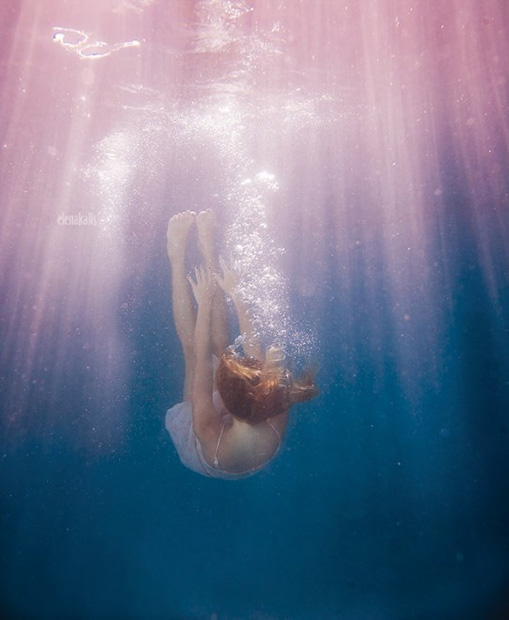
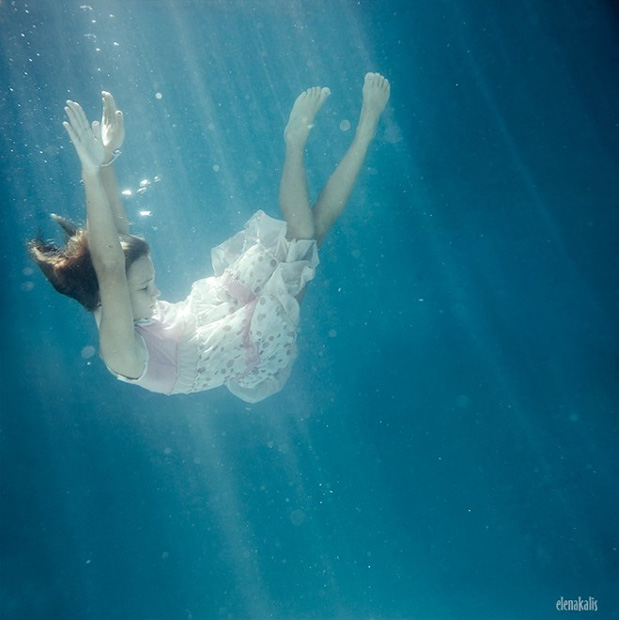
If it were a tetratych I could add a second drawing that is me looking down at my feet to give the sense of the scene being viewed from my perspective. The third would be the people falling and specifically mum pulling me over.
I need to decide fairly early on what format and size the finished work will be. PERHAPS IF A TETRATYCH THE FOUR PANELS WOULD BE PORTRAIT FORMAT. This might make more sense in a concertina book:
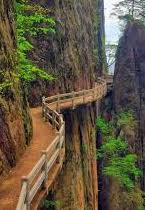



Or, I could make every panel square – join 2 panels in the middle with two flaps either side joining in the middle, or concertina:

OR, because I like the final panel as a landscape format, I could join together the second and third image to make one long image made up of an A2 landscape and A3 portrait size and then have a folding A3 portrait size panel on the left and an A2 landscape panel on the right – they should fold to meet to the left of centre, see below:

OR alternatively – it would also work if I made all four panels A3 landscape format – joined the two together in the middle and have equal sized landscape A3 panels as folding ‘wings’ that join in the centre – but that would be very long and narrow.
I prefer the first three drawings all portrait and the final one landscape but this would mean I need to buy some A2 mount board and I’m also not sure how it would fold neatly:

This has been a useful exercise. At the end of it I have decided to leave out the foot drawing – I want to remain as true as I can to the dream and there was no sense of me looking down at me feet – also I think it is a lazy option because easy to draw. So back to figure 4a at the start. This still leaves me no nearer solving the folding problem since the third panel is still the widest. It will just have to be a concertina book. Or Maybe the right hand panel can fold over the middle panel and the left hand panel fold over that – I like the idea of the ‘surprise’ or ‘hidden’ aspect of the fold-over leaves in a triptych.
I also like that we see the faces of the people in the left photo beneath – I think this gives a more subjective sense – as if they might be smiling at me just in front of them. The feeling in the dream was that the walk along the path was a calm, if purposeful outing – the sun shone. the sea sparkled. The horror only came at the end:

Perhaps we don’t get the sense of the jumping people so soon on the walk – in the middle picture above we see them from quite a way off. Perhaps we round the corner and there is the sea and the abrupt end to the path :

Today I worked on the folding trypych. Because the story is dark, I want the panels to be beautiful.
I used A3 mount board and 2 in. wide, black fabric self adhesive book-binding tape. Importantly I did not put the tape on with the card edge to edge on a flat surface because I thought that would not fold. Instead I stacked the two pieces of card together like two book ends and put the spine along the tape and then put the card down flat so that one side stuck, turned over and did the same to the other side. With the three pieces of card I followed the same method with three pieces stacked on top of one another. I then glued down a piece of A3 cartridge paper over each of the inside 3 panels so that the black tape is covered over apart from a sliver of black dividing the panels. I covered the back of each of these three panels with monoprinted newsprint. The reason for the cartridge paper is a). to cover the black fabric inside. b). because I think cartridge paper is better to draw on than mount board. c). to strengthen the triptych. Below are some photographs of the final structure ready for the drawings.






This way of assembling the triptych has worked very well and resulted in three panels that fold absolutely flat, are sturdy and very neat. Now for the drawing. So far I have decided WHAT I am going to draw. WHY I AM going to draw it. And WHAT I am going to draw it on. Now I have to decide HOW I am going to draw on top of an acrylic surface that is fairly dark in the case of two of the panels. What medium am I going to use and what kinds of considerations am I faced with? Am I going to use collage? Am I going to think about further layering and juxtaposition e.g. of rough v. smooth OR shiny v. matt. I am halfway through the four weeks I have assigned for this project. I plan to spend the next week experimenting. And the final week making the drawings.
I decided at this point to look at Jen Brown’s blog where she posts a narrative painting daily. There are hundreds of fantastic paintings on her blog from old Masters, for example Rubens, 19th century ‘Masters’ , for example, Picasso, and contemporary artists. I COULD HAVE CHOSEN ALMOST EVERY PAINTING, BUT have chosen a selection of works in the gallery below, either because they feature water (top right, bottom right and bottom middle), or because they feature coronavirus (two men in red with masks, skeleton eating people) or because I think the technique is something I could possibly borrow from. The most striking thing about the works on her blog is how technically good they are. And how inventive. I find drawing figures difficult and I know this project is going to be a challenge. The other thing that is very striking about the hundreds of narrative paintings featured on Browns blog is how ‘dark’ the subject matter of the majority of works. Interesting there are no triptychs and only two diptychs featured (https://narrativepainting.net/page/32/). Looking at the contemporary works, for example, POTHIER and McSHERRY I feel heartened that my concerns about the state of the world, as well as the state of art and its role, are echoed in the works on Browns blog (I only wish I could paint like this).











TOP ROW: 1.Arthur Rackham, Illustration for Edition of ‘A Christmas Carol,’ 1915 2. Vincent Desiderio, Men in Snow, 2017 3. Chris Pothier, American Apocalyptic, 2019-20 4. Thrandur Thorarinsson, Neck, 2015
MIDDLE ROW: 1. Chris Pothier, American Apocalyptic, 2019-202. 2. TOP – Kevin McSherry, The Death of Reason, 2019 BOTTOM – Henk Pander, The Climate Refugees of Vanport, 2018. 3.Ben Askevold, Subliminal Fear, 2017-19 2.
BOTTOM ROW. 1.Elliot Wall, Блис Белай (Bliss Belay or Becoming Pure), 2016. 2. Paul Albert Steck, Ophelia, 1895 3. Odd Nerdrum, Drifting, 2006
Experiments for panel 3:


The next drawing was done by covering the prepared background (painted in acrylics) first with gesso then with polychromos. I like the different size fish and I like that one arm is sticking out of the painting and one fish at the bottom disappearing out of the frame.
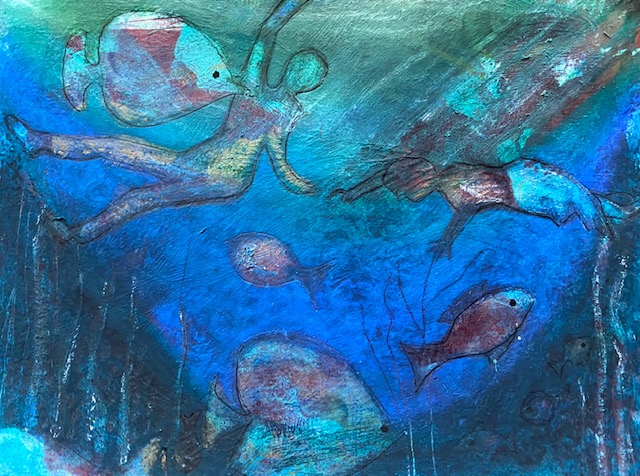
This is too much hard work – especially if I do all three panels in the same technique – which I haven’t decided. I wonder if an electric rubber would make it any better? Interesting how much less vibrant the under colours are once gesso added. I guess its just really difficult to get all the polychromos out. On the other hand – I actually prefer this more subtle version. Right hand figure could move a bit further forward to get more of her legs in. Probably left figure could have slightly shorter legs and shift slightly to the left to. like the fish at the bottom with a blue face – looks like a bird. What I prefer about the oil paint version currently is that its easier to keep moving things around – just wipe over and do again. I suppose you could just draw over with polychromos again.

I could work further on the drawing above but I think I have enough information. I’m wondering what to do for the fourth experiment. I might try combining some of the techniques ie rubbing into and drawing onto as well as some collage. These colours are rather gorgeous – I don’t think my prepared panel has quite such nice mark making – I particularly like the top right marks coming in from the right – they look like seaweed. I like the left person’s arm coming under the right person’s arm – I could however move person on the right even further over so her whole shoe is in the picture and I’d like the person on the left to stretch even further toward the left and be a bit fatter. I don’t like those two black arms.
A look at them together:


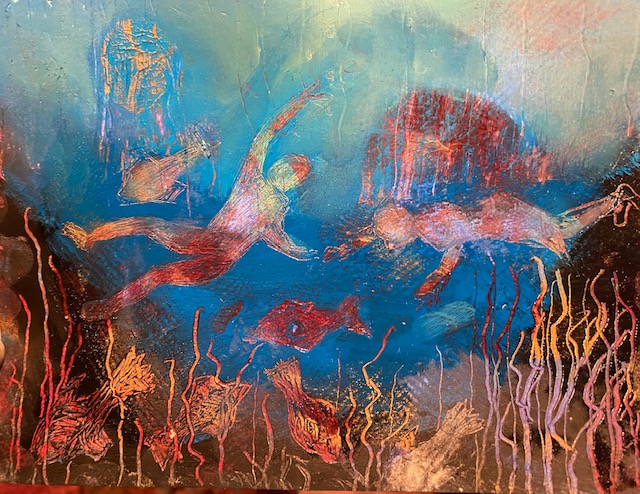
Working out the composition for the middle panel


nb The cliff was on my right! Also there was no hand rail. I think the horizon needs to be even lower to get the sense of height and I think the left hand rock is too big and intrusive. Also really important to get the sense of being pulled off reluctantly.

I think this last one is about right. (I do have the feeling in the back of my mind that I am not leaving any room for the work to develop when I make they tryptch itself. There is that nagging thought that I’m being too didactic. On the other hand this dream is very specific and the perspective should be clear. The room for development/surprises will come in the WAY it is made/colours/marks – not in the composition – this is fine).
Panel 1
I find it hard to believe I again drew this the wrong way round. If my right shoulder is on the right of the wall then it has to be flipped horizontal. this of course means the writing here is illegible but the is ok. I think this quick sketch gives me enough info. The second woman needs to be a bit closer to the first to allow more people to be fit in behind. The rocks, trees and sky should give me opportunities for interesting mark making.

I like the fact that we see this from the perspective of someone on the path (me I guess). In the first panel I am looking behind me. In the second panel I am looking ahead. This means that the path is on the left in the first view, and on the right in the second view. I think this makes it more interesting.
Here is the plan for the tryptych so far. I’m feeling fairly optimistic. I think I can at least have a go on the A3 prepared panels now:

Reflection
I enjoyed making the tryptch itself and I’d like to make more. I think they are especially useful for continuous narrative. I found it difficult to come up with a narrative relating to a personal experience that I wanted to draw. I think the dream was the right choice. I still prefer starting with a fictional narrative, as for exercise two, but I think that dreams are an additional source of interesting material and I will be more careful to note down any powerful dreams in future for this purpose.
It took quite a lot of research to come up with the images, especially since two panels have a number of people in them and I borrowed from several sources to make composite images.
My research question for this exercise is: How can I depict a powerful dream that stayed with me for 18 years to retain the drama and darkness/horror of the narrative, while at the same time keeping some aesthetic beauty in the work?
I feel so close to the work/dream now that I am not sure how to read it. I still find it horrifying. And I think the drawings are beautiful. I hope I have achieved some sense of mood by using brighter colours in panel 1, and more sombre colours in panel 2. I’d like to check out how others respond and I will show the tryptch to my art mentoring group to get their comments.
I would like to have another go at this – perhaps on A2 rather than a3 panels and with different mediums. Perhaps more experimental with collage added into the drawing. In relation to drawing skills – on the positive side I have followed through an idea to completion and explored using some different techniques and materials – inevitably, because of the decision to start with acrylic painted boards, my choices have been confined. On the negative side – drawing detail on top of bright acrylic paint, and making more varied marks, is difficult and can lead to a rather cartoonish feel.
References.
Jen Brown. https://narrativepainting.net/page/32/)
https://www.gov.uk/guidance/high-consequence-infectious-diseases-hcid
Foucault, M.(1969) The Archaeology of Knowledge. London: Routledge.
